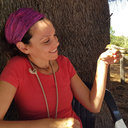
Rocío Márquez-FerrandoEstación Biológica de Doñana · Wetlands Ecology
Rocío Márquez-Ferrando
About
19
Publications
4,830
Reads
How we measure 'reads'
A 'read' is counted each time someone views a publication summary (such as the title, abstract, and list of authors), clicks on a figure, or views or downloads the full-text. Learn more
551
Citations
Publications
Publications (19)
Trace elements can be toxic when they cannot be easily removed after entering an ecosystem, so a long-term assessment is fundamental to guide ecosystem restoration after catastrophic pollution. In 1998, a pyrite mining accident in Aznalcóllar (south-western Spain) spilled toxic waste over a large area of the Guadiamar river basin, where, after rest...
Capsule: Most Continental Black-tailed Godwits Limosa limosa limosa using the Doñana wetlands during post-breeding migration appear to begin moult before they arrive and suspend moult before they migrate onwards to West Africa.
Aims: We aim to describe the primary moult strategies and patterns in the Continental Black-tailed Godwits using the Doñan...
The Numeniini is a tribe of 13 wader species (Scolopacidae, Charadriiformes) of which seven are Near Threatened or globally threatened, including two Critically Endangered. To help inform
conservation management and policy responses, we present the results of an expert assessment of the threats that members of this taxonomic group face across migra...
Migrating long distances requires time and energy, and may interact with an indi-vidual's performance during breeding. These seasonal interactions in migratory animals are best described in populations with disjunct nonbreeding distributions. The black-tailed godwit (Limosa limosa limosa), which breeds in agricultural grasslands in Western Europe,...
Over the past 50 years, the population of Continental Black-tailed Godwits
Limosa limosa limosa breeding of the East Atlantic Flyway has been in steep
decline. This decline has previously been documented in trend analyses and six
Netherlands-wide count-based population estimates, the last of which was
completed in 1999. We provide an updated popula...
AimMountain regions are particularly well-suited for investigating the impact of climate change on species ranges because they encompass both upper and lower limits of species distribution. Here, we investigate changes in the elevational distribution of dung beetle species (Coleoptera: Scarabaeoidea) in two separate mountain regions in Europe. Loca...
Editor's suggested further reading in BioEssays: Evolution in response to climate change: In pursuit of the missing evidence Abstract
How will fish that evolved at constant sub-zero temperatures cope with global warming? Notothenioids as a case study Abstract
In Mediterranean areas, river systems are key for maintaining regional biodiversity by providing a high diversity of habitats. We studied bird community recovery for 9 years (2001–2009) during landscape restoration and Guadiamar Green Corridor establishment in the area affected by the Aznalcóllar mine spill (SW Spain, 1998). One year following plan...
In November 2010, we discovered the importance of the Doñana National and Natural Park, in SW Spain, for the declining nominate subspecies of the Black-tailed Godwit Limosa limosa limosa. Among about 15,000 godwits, we observed 109 different colour-ringed birds of which 91 (83%) were of the nominate race, four were from the Icelandic race L. l. isl...
Ecosystem restoration requires that habitat requirements of all species be considered. Among animal communities in Mediterranean ecosystems, reptiles, as ectothermic vertebrates, need refuges for avoidance of extreme environmental temperatures, concealment from predators, and oviposition sites. In 1998, a massive amount of tailings broke out of the...
Quantification of heavy metal concentrations in biota is a common technique that helps environmental managers measure the level of pollutants circulating in ecosystems. Despite interest in heavy metals as indicators of localized pollution, few studies have assessed these pollutants in reptiles. In 1998, the tailing pond of a pyrite mine near Aznalc...
Iberus gualtierianus L (1751) is an endemic helicid from the Iberian Peninsula, whose reproduction is almost unknown. During a field study in Sierra Elvira (SE Spain) we recorded 12 copula events of this species, five of them (41.6%) consisting of three snails forming a trio. Detailed observations of several trio events showed that two individuals...
Introducción General, Capítulo 5, Discusión General y Conclusiones en español Tesis Univ. Granada. Departamento de Biología Animal. Leída el 20 de junio de 2008













































